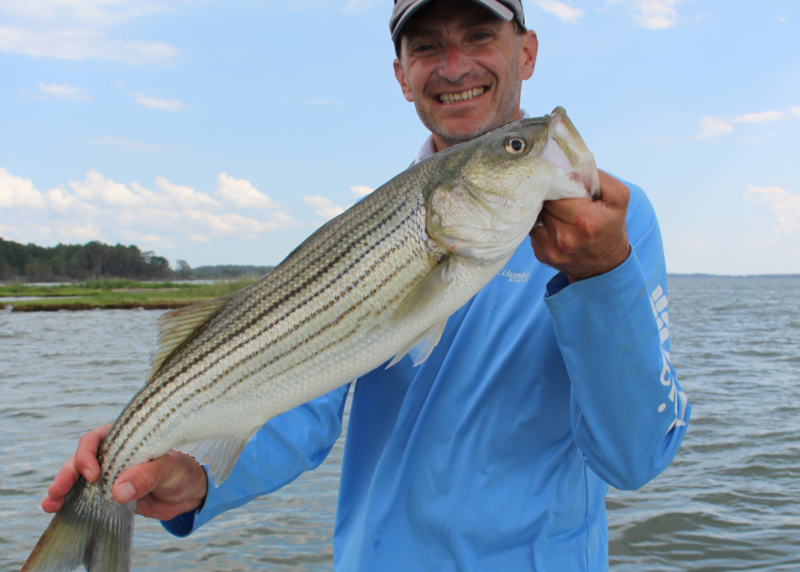Many anglers dread the May worms, as they can lead to striped bass with full bellies and little desire to eat a lure. Consider this event from a slightly scientific-ish perspective, however, and you can use the May worm spawn to your advantage.

- May worms generally mass around a full moon (which is May 16 this year) but other environmental conditions can shift the exact timing by weeks. After peaking, the activity continues but steadily drops off for the next week or so. During the beginning and end of the phase when worm numbers are relatively low, you can match the hatch by fishing small red worm flies with fly gear. For spinning or conventional gear, put a fly or small plastics on a dropper (try 15-pound fluoro) two to four feet below a popper.
- When the spawn (though commonly called the “hatch,” this is a misnomer as these creatures are actually gathering to spawn) is peaking, using worm-like lures that mimic the real thing can be hopeless simply because the water is riddled with free food. Instead, try casting a larger four- or five-inch soft plastic in a similar but slightly different color, so that it stands out in the mass of food. Pink or Electric Chicken are generally good bets.
- These worms come out of the mud and are swept along by the current. As a result, you’ll often discover the best fishing at a point being hit by an outgoing current, downstream of a salt marsh or a marshy, muddy area.
- Try not to time a trip early in the day during the peak of the spawn. The worms are most active at night, so starting out at daybreak you may well be targeting fish that have full bellies and zero desire to chase after more food. By midafternoon, however, those fish should be willing to feed again.